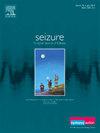挪威北部某县成人癫痫的发病率、患病率、临床特征和死亡率(2012-2022)
IF 2.8
3区 医学
Q2 CLINICAL NEUROLOGY
引用次数: 0
摘要
背景:癫痫影响人口的0.5 - 1%,仍然是一种重要的神经系统疾病。本研究调查了2012年至2022年挪威北部Troms县成人癫痫的流行病学和临床特征。我们重点关注发病率、患病率、诊断方法、治疗结果、先进疗法的使用、死亡率和癫痫相关死亡,包括癫痫猝死(SUDEP)。方法采用电子健康记录对2012 - 2022年成人活动性癫痫(ICD-10代码G40)患者进行回顾性队列研究。如果患者在过去五年中至少经历过一次癫痫发作或正在积极接受治疗,则包括在内。统计数据、诊断评估、抗癫痫药物使用、先进疗法(迷走神经刺激、生酮饮食)和死亡率进行了分析。分别使用多变量logistic回归和Cox回归评估与癫痫发作控制和死亡率相关的因素。结果在1606例患者中,1211例符合纳入标准,患病率为687 / 10万,发病率为43 / 10万。60%的病人没有癫痫发作。诊断年龄(OR 0.94, 95% CI 0.91-0.97, p <;0.001)和抗癫痫药物数量(OR 0.60, 95% CI 0.54-0.66, p <;0.001)与癫痫发作自由负相关。只有2%的患者接受迷走神经刺激,0.4%的患者采用生酮饮食。8407人每年死亡307人,标准死亡率为女性2.76,男性2.70。16例死亡与癫痫有关,包括猝死症。主要死亡危险因素包括癫痫发作控制不良、男性、高龄和EEG/MRI异常。结论癫痫患病率0.69%与北欧数据一致。高比例(39.5%)的患者发作不受控制,强调需要改进治疗策略和扩大获得先进疗法的机会。我们观察到标准化死亡率增加了近三倍。高龄、男性、癫痫控制不良、脑电图或MRI异常与死亡率增加显著相关。这些发现强调需要个性化的管理策略来改善癫痫治疗的长期结果。本文章由计算机程序翻译,如有差异,请以英文原文为准。
Adult epilepsy in a North Norwegian County – incidence, prevalence, clinical features, and mortality (2012-2022)
Background: Epilepsy affects 0.5–1 % of the population and remains a significant neurological disorder. This study examines the epidemiology and clinical characteristics of epilepsy among adults in Troms County, Northern Norway, from 2012 to 2022. We focus on incidence, prevalence, diagnostic approaches, treatment outcomes, use of advanced therapies, mortality rates, and epilepsy-related deaths, including Sudden Unexpected Death in Epilepsy (SUDEP). Methods We conducted a retrospective cohort study using electronic health records to identify adults with active epilepsy (ICD-10 code G40) from 2012 to 2022. Patients were included if they had experienced at least one seizure in the past five years or were actively receiving treatment. Data on demographics, diagnostic evaluations, antiseizure medication use, advanced therapies (vagus nerve stimulation, ketogenic diet), and mortality were analyzed. Factors associated with seizure control and mortality were assessed using multivariate logistic regression and Cox regression, respectively. Results Out of 1606 patient records, 1211 met the inclusion criteria, yielding a prevalence of 687 per 100,000 and an incidence of 43 per 100,000. Sixty percent of patients achieved seizure freedom. Age at diagnosis (OR 0.94, 95 % CI 0.91–0.97, p < 0.001) and number of antiseizure medications (OR 0.60, 95 % CI 0.54–0.66, p < 0.001) were negatively associated with seizure freedom. Only 2 % of patients received vagus nerve stimulation, and 0.4 % followed a ketogenic diet. Over 8407 person-years, 307 deaths occurred, corresponding to standardized mortality ratios of 2.76 for women and 2.70 for men. Sixteen deaths were epilepsy-related, including SUDEP. Key mortality risk factors included poor seizure control, male sex, advanced age, and abnormal EEG/MRI findings. Conclusions The epilepsy prevalence of 0.69 % aligns with Nordic data. The high proportion (39.5 %) of patients with uncontrolled seizures underscores the need for improved treatment strategies and expanded access to advanced therapies. We observed a nearly threefold increase in standardized mortality rates. Advanced age, male sex, poor seizure control, and abnormal EEG or MRI findings were significantly associated with increased mortality. These findings emphasize the need for individualized management strategies to improve long-term outcomes in epilepsy care.
求助全文
通过发布文献求助,成功后即可免费获取论文全文。
去求助
来源期刊

Seizure-European Journal of Epilepsy
医学-临床神经学
CiteScore
5.60
自引率
6.70%
发文量
231
审稿时长
34 days
期刊介绍:
Seizure - European Journal of Epilepsy is an international journal owned by Epilepsy Action (the largest member led epilepsy organisation in the UK). It provides a forum for papers on all topics related to epilepsy and seizure disorders.
 求助内容:
求助内容: 应助结果提醒方式:
应助结果提醒方式:


